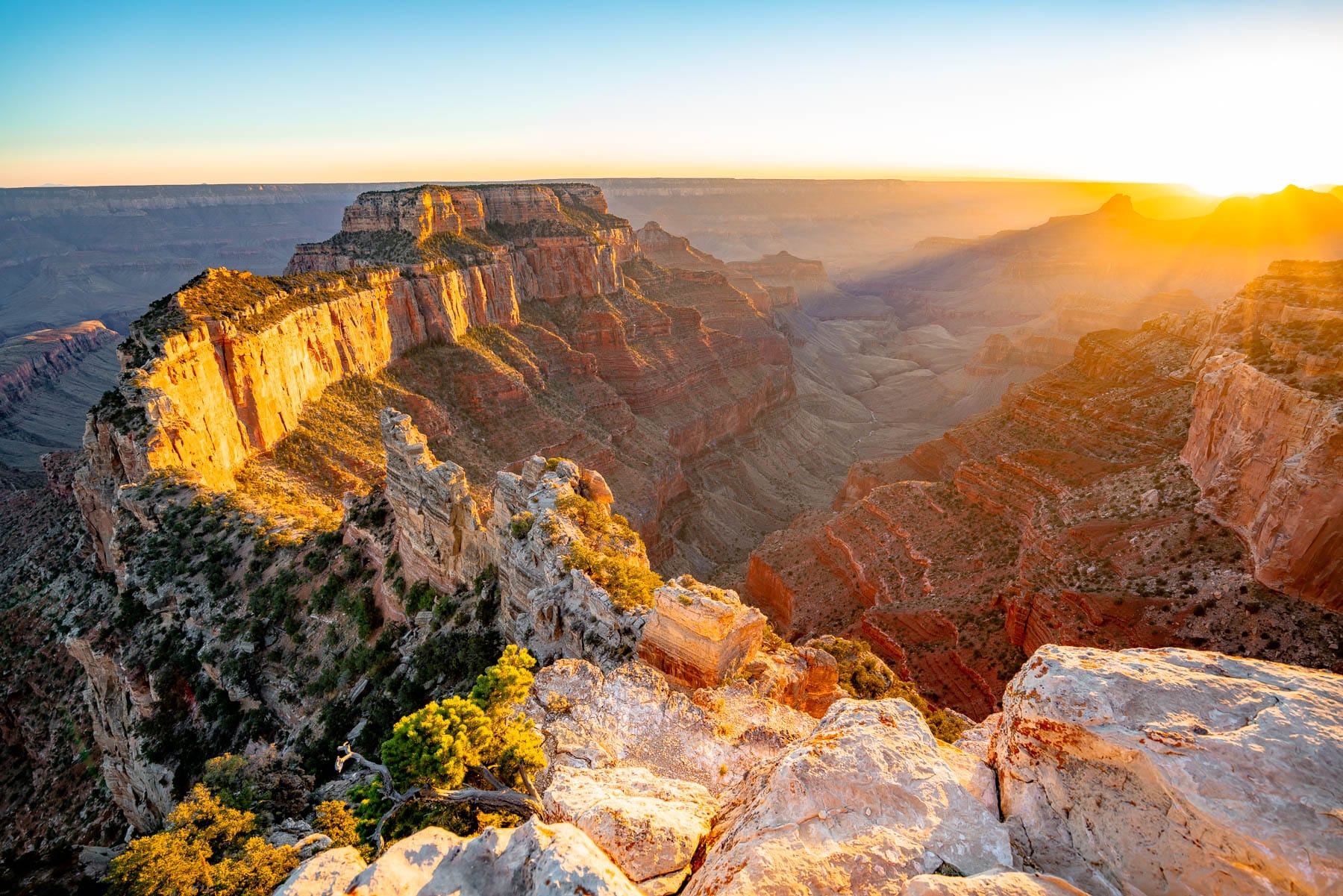
Article Summary: National Parks Near Las Vegas
National Parks near Las Vegas. There’s so much more to this beautiful state than Las Vegas. In this article, we’ll familiarize you with the incredible national park sites that are within a five hour drive of Las Vegas.
There are 9 national park sites for you to see on your next visit to the Silver State.
To be clear, this list includes national park sites (as in sites managed by the National Park Service) as well as full-fledged national parks.
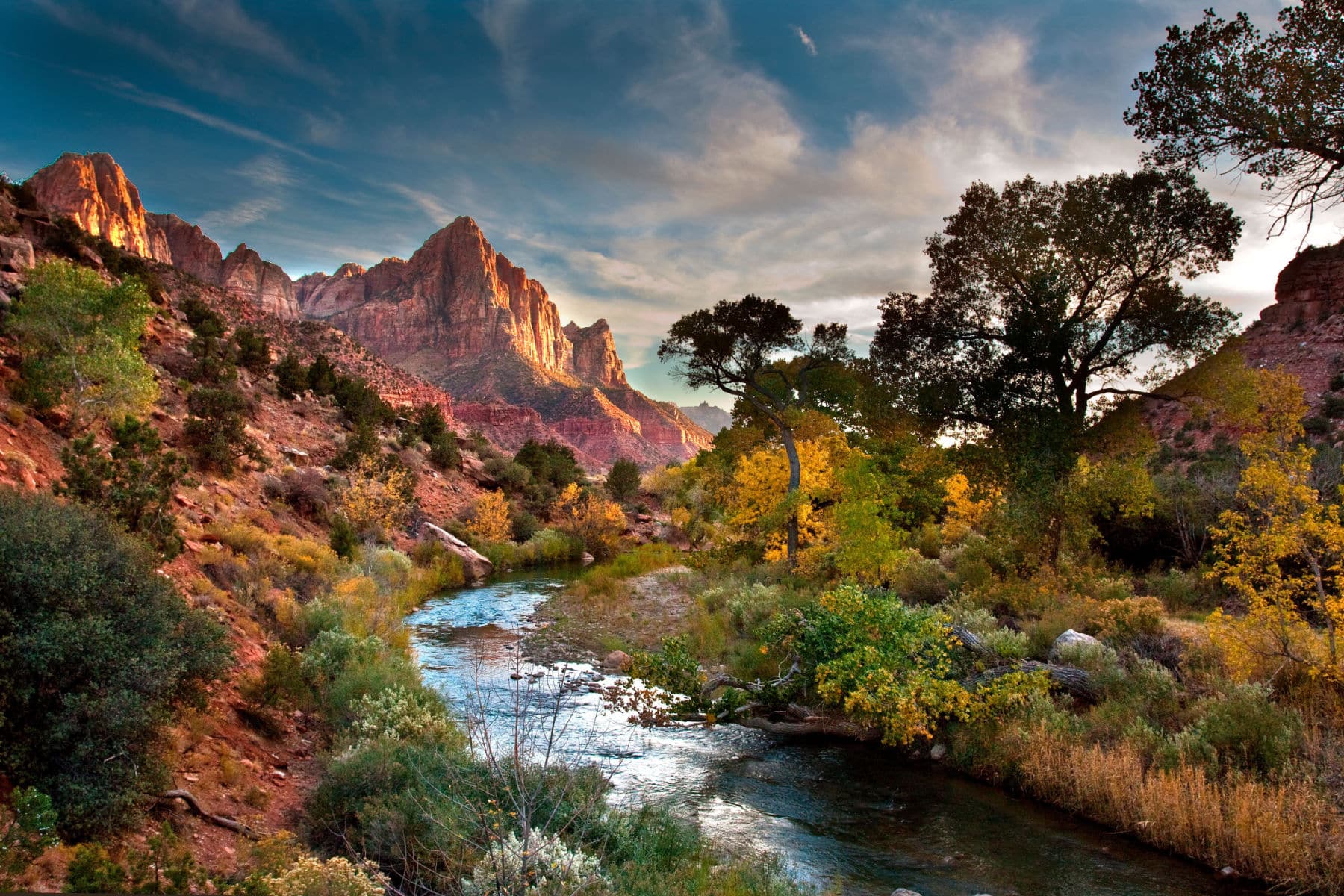
So, What Is A National Park?
We get asked that question a lot because there’s a difference between a “national park” and a “national park site.” To help you understand that difference you might want to check out our article titled: What Is A National Park Really?
If you’re planning a trip to the Silver State then one book I highly recommend is: Nevada Bucket List Adventure Guide: Explore 100 Offbeat Destinations You Must Visit! It’s written by Alex Woods.
Now lets go ahead with 9 reasons why you’ll want to make a drive of five hours (or less) from Las Vegas to one of these amazing places.
Table Of Contents: National Parks Near Las Vegas
Best National Parks Near Las Vegas
1. Death Valley National Park
Located approximately 130 miles from Las Vegas, Death Valley is only about a 2 hour drive from the Strip.
Death Valley is situated on California’s southeastern border with Nevada, Death Valley National Park spans over 5,000 square miles of otherworldly vistas. The largest national park in the continental United States, Death Valley is a park for superlatives.
Death Valley is the hottest place on earth, the lowest place in North America, and the driest place in the United States. It is also the largest National Park outside of Alaska.
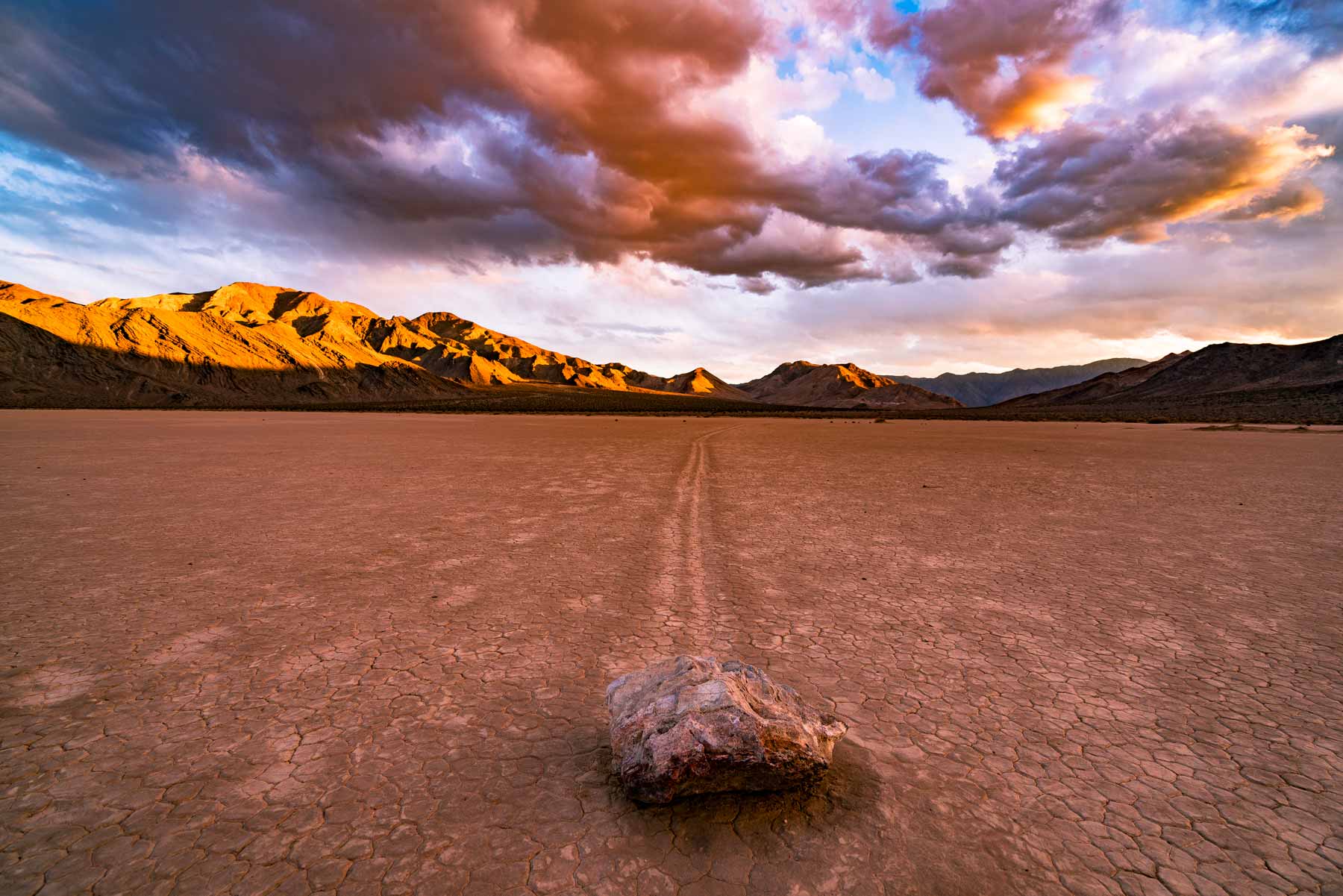
Things to Do in Death Valley
Massive slanted valleys that go on forever and seem to lack only the crashed spaceship in the distance, snow-capped mountains, a year round waterfall (insane, right?), expansive forests, abandoned mines, conifer groves, and some of the most stunning dune fields in North America comprise the park with the most morbid name.

If you’re visiting the park be sure to check out our full Death Valley National Park Guide!
Eureka Dunes
Located in the remote Eureka Valley and situated at 3000ft elevation, Eureka Dunes is the most stunning dune field (I think) of the five in Death Valley National Park. Eureka Dunes are the tallest in California and perhaps the tallest in North America.
What makes this dune field even more stunning is the backdrop of the massive Last Chance Mountains. As if that isn’t enough to entice one to visit, did I mention they sing?
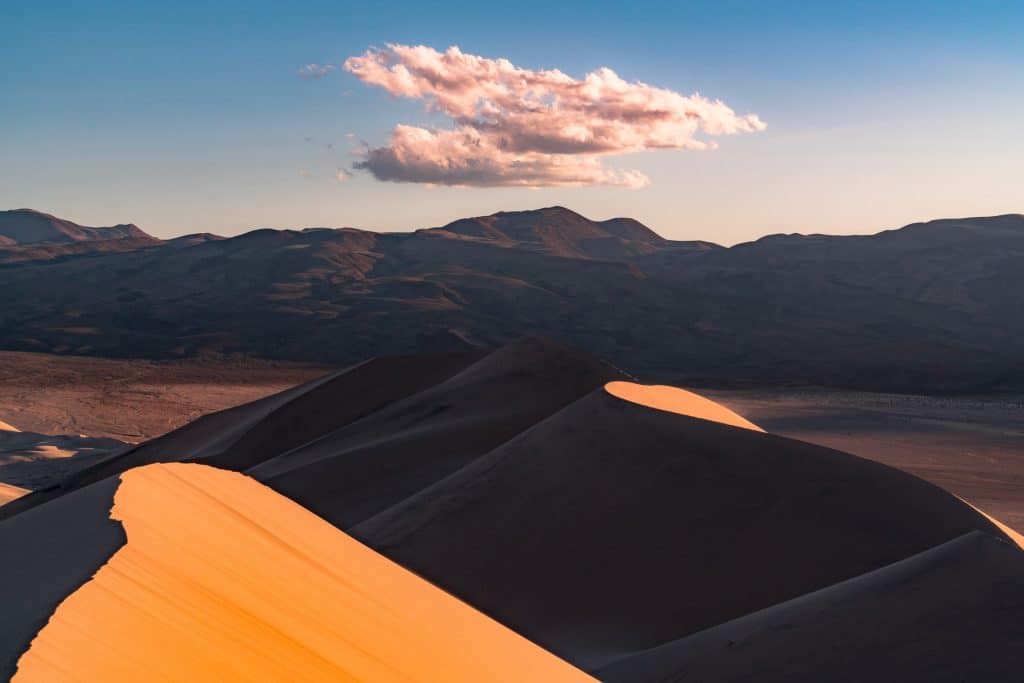
RELATED: 10+ (FASCINATING) Death Valley National Park Facts You Probably Didn’t Know
Badwater Basin
Badwater Basin is the lowest point in North America at 282ft below sea level. This salty wonderland features dazzling geometric shapes and record temperatures in the Summer.
Visitors can park at the Badwater Basin parking and walk out across the salt flats to the end of the boardwalk and out onto the salt itself which is a truly amazing experience.
Badwater Basin Hike: Most visitors just hike out a few steps beyond the short boardwalk but to truly get a sense of the scale of the salt flats one can do the entire 1.8mile path.
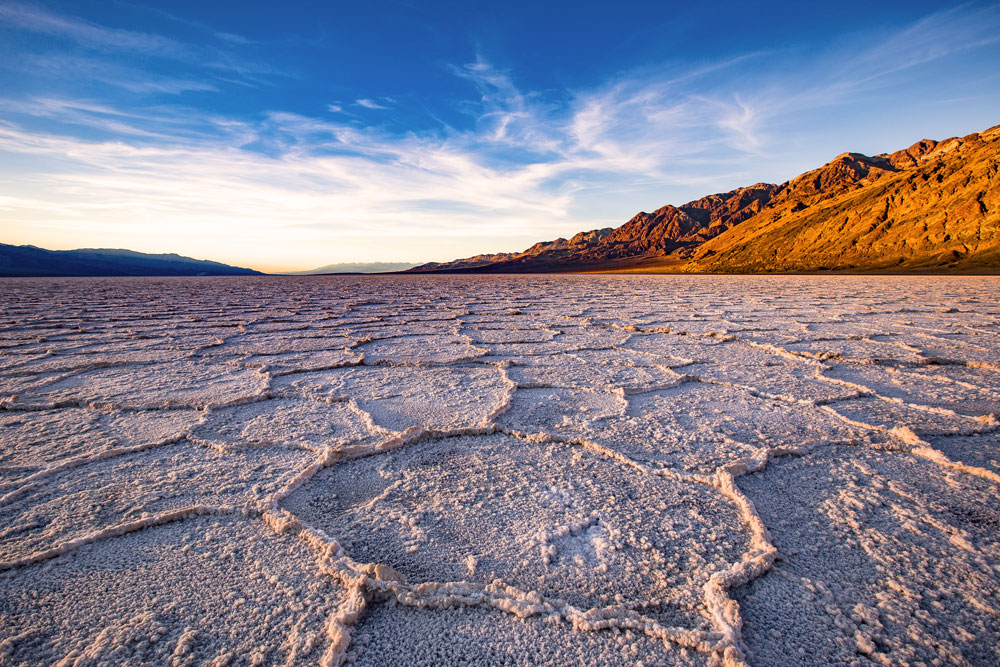
Zabriskie Point
Zabriskie Point is one of the most iconic locations in all of Death Valley National Park. This location is perhaps *the* best place in the park to watch a sunrise. This iconic location features panoramic views of the valley and stunning rock formations.
As one of the parks most popular locations crowds here can be quite large especially during the popular seasons. Be sure to show up early for sunrise to get a good spot!
There is a short, steep paved pathway that takes visitors from the parking lot to the viewpoint.
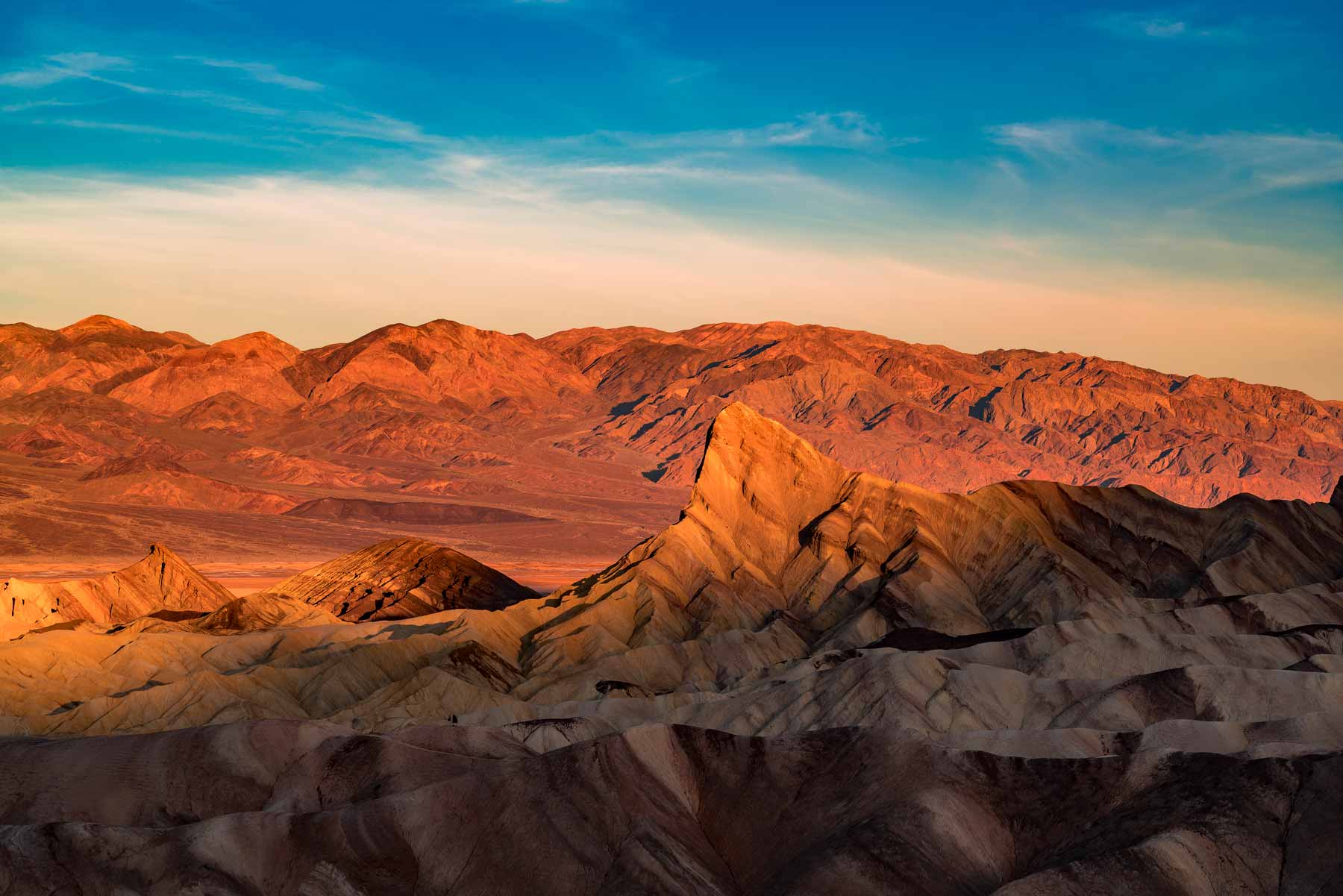
Watch Our Death Valley National Park 8K Film
In the remote far reaches of the Mojave Desert lies the largest national park in the continental United States. Hidden here in the hottest place on earth is another world full of diverse life and colorful landscapes.
Join us as we take life to the extreme and explore Death Valley. Filmed primarily in 8K.
To make this film we spent weeks in California’s (& Nevada’s) Death Valley National Park, mostly in February and March when the temperatures are more manageable. We traversed hundreds of miles hiking most of the parks trails to capture the park like never before.
2. Joshua Tree National Park
Joshua Tree is a drive of 229 miles or about 4 hours and 15 minutes from Las Vegas to Joshua Tree.
It’s the iconic southwestern desert park that you’ve probably heard so much about–Joshua Tree National Park. It’s been featured in countless movies, television shows, and yes, of course music videos.
Named for the one-of-a-kind trees that call the area home, Joshua Tree National Park is a true desert wonderland.
Watercolor sunsets and night skies teeming with stars, fairy tale trees and giant boulder piles, warm desert air and endless vistas, these are the hallmarks of this iconic southwestern destination.
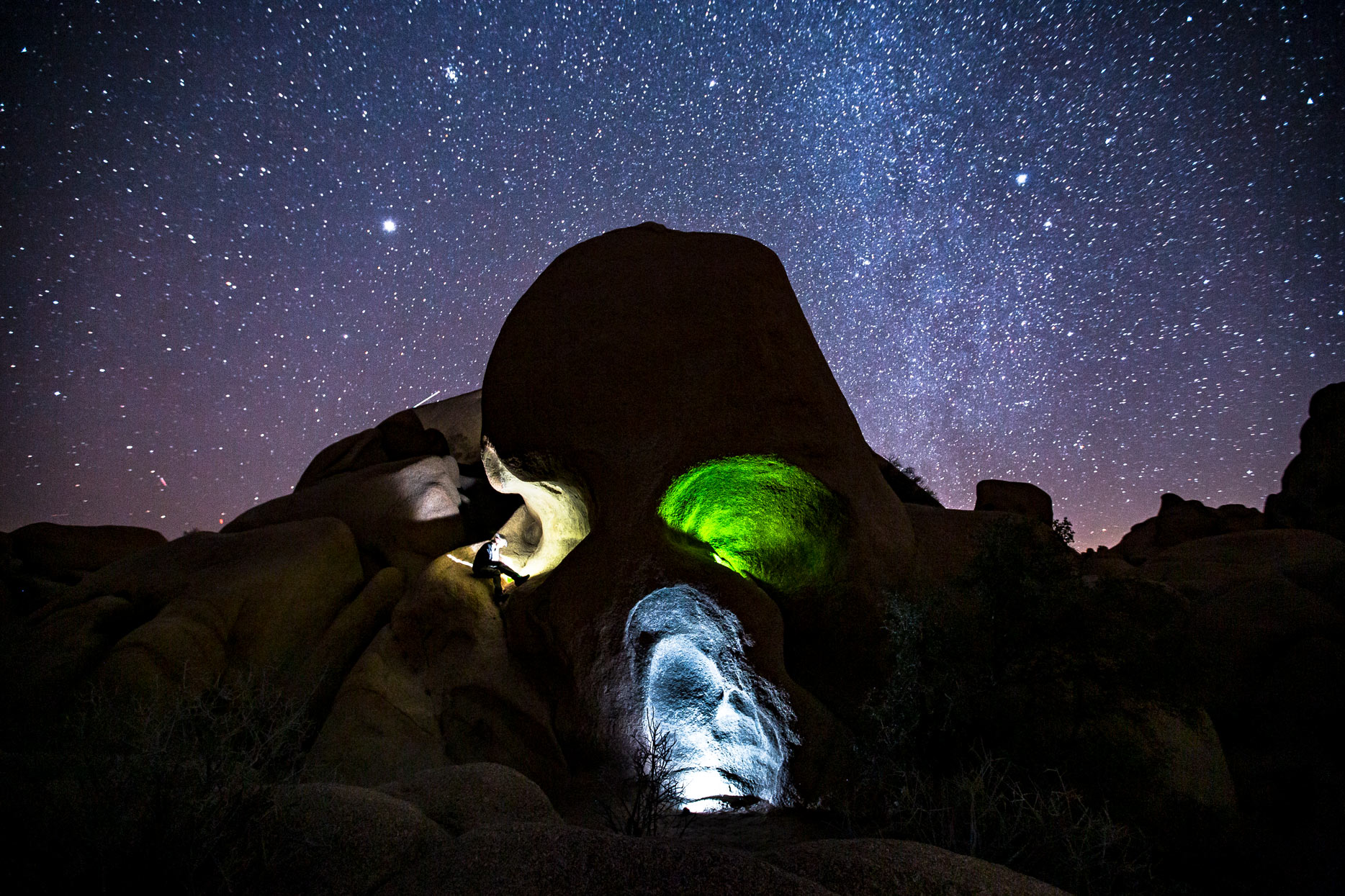
Crowds at Joshua Tree
If you’re wondering how crowded Joshua Tree is considering it’s cultural popularity – well the answer depends of course on when you visit. The summer can see heavy visitation in the park with the major highlights and campgrounds bearing the brunt of the burden.
Finding a campsite can be extremely challenging during peak summer visitation.
The spring and fall offer better opportunities for those with time off and the need to visit this one-of-a-kind destination. During those times of year the weather is usually mild and the park feels more in balance with the visitors.
Winter sees very few visitors, but can also be quite cold, especially if you’re planning an overnight trip.

RELATED: ALL 9 EPIC CALIFORNIA NATIONAL PARKS RANKED
Travels to Joshua Tree National Park
More Than Just Parks Co-Founders Will & Jim Pattiz first traveled to Joshua Tree way back in 2013 on a road trip to the southwest. It was early January and the park was devoid of tourists and seemed magical.
The landscapes were otherworldly and the brothers knew then that they would be coming back for future visits.
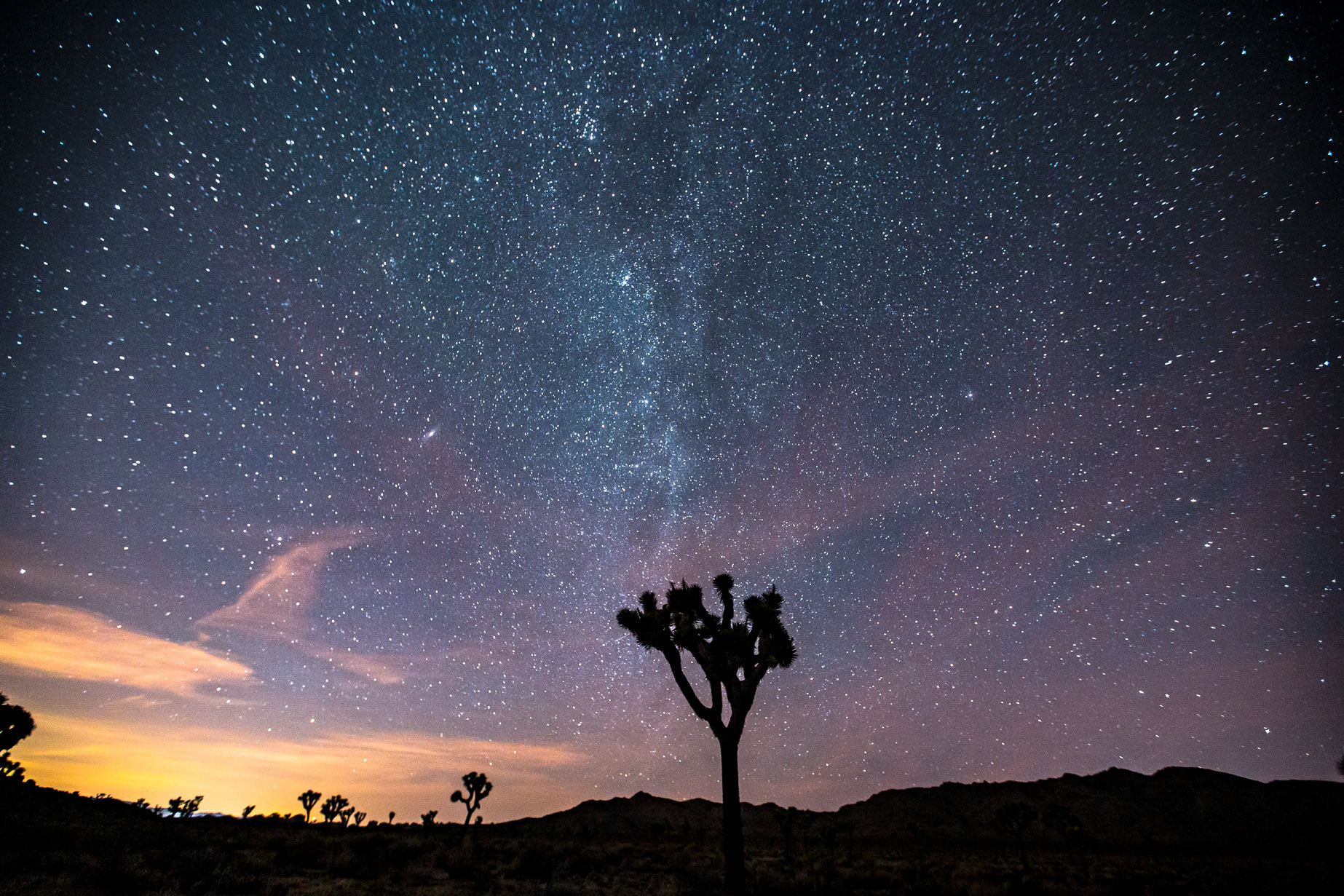
Watch Our Joshua Tree National Park Film
Fast forward two years and another road trip out west and the Pattiz Brothers found themselves with cameras in tow creating what would become their Joshua Tree film.
It was another January and the nights and mornings were bitter cold and filled with the howls of nearby coyotes. Days were spent hopping boulders, exploring abandoned mines, and chasing fleeting shots of wildlife.
The park was so spectacularly quiet and devoid of other humans that it became odd to sight other cars or people outside of a campground. After a few days they soon discovered this vast expanse of desert was actually teeming with wildlife if you were willing to spend the time to become acquainted with it.
Joshua Tree is a park that will make a lasting impact on you if you take the time to experience it right, whether that’s for a day or several days.
Things to Do at Joshua Tree National Park
Explore Hidden Valley: Hidden Valley is home to one of the largest and most beautiful Joshua Tree forests on the planet with some of the craziest looking trees you’ll lay your eyes on. A hike through this unique and otherworldly landscape is a must for everyone visiting the park.
Take in a Sunset at Cottonwood Springs Oasis: Of all the places to watch a sunset in Joshua Tree National Park, our favorite may be from one of the lesser visited areas of Cottonwood Springs. Birds of prey including hawks and kestrels soar overhead while the sky above lights up with the setting sun making for a dazzling display.
Stargazing At Joshua Tree: Some of the best stargazing in the country happens every night in the crown jewel of the Mojave, Joshua Tree National Park. It’s hard to choose a bad spot in this park to simply gaze up at the galaxy around you through one of the darkest skies you’ll find in America.
Discover Arch Rock: This 30 foot natural arch is one of the most popular and heavily photographed spots in all of Joshua Tree National Park – and it makes sense why! It’s pretty darn cool! The hike to the arch is great as well. Add this one to your list for sure.

RELATED: Joshua Tree National Park-An EPIC Guide To California’s Desert Oasis
3. Lake Mead National Recreation Area
A trip to Lake Mead is only a short distance from Las Vegas. It’s the largest reservoir in the United States in maximum water capacity. It is located on the Colorado River about 24 mi (39 km) from the Strip southeast of Las Vegas, Nevada, in the states of Nevada and Arizona.
Formed by the Hoover Dam, Lake Mead is an impressive place: 112 miles long when the lake is full, 550 miles of shoreline, around 500 feet at greatest depth, 247 square miles of surface, and when filled to capacity, 28 million acre-feet of water.
What can you do at Lake Mead? Swim, boat, hike, cycle, camp and fish. This geologic wonderland includes 1.5 million acres of mountains, canyons, valleys and two vast lakes.
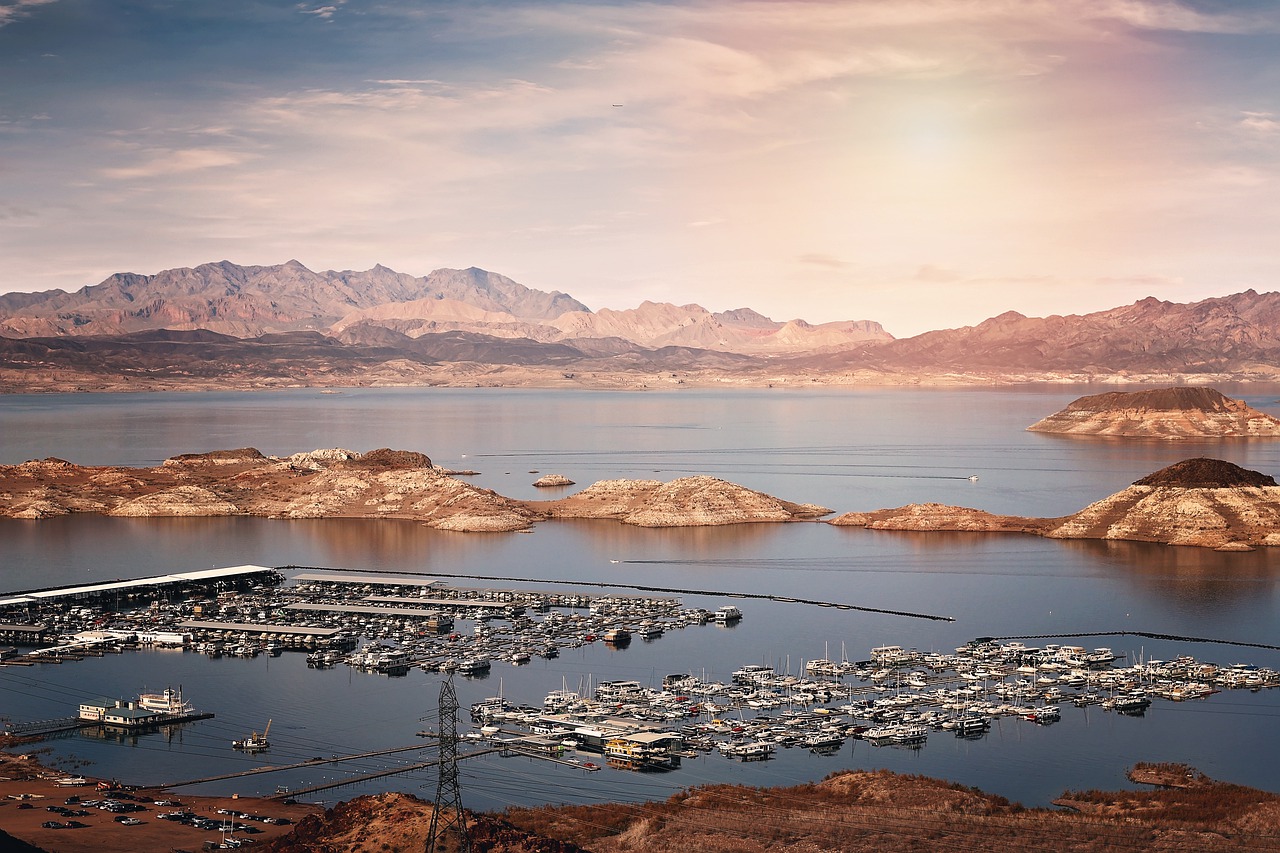
Outdoor Activities At Lake Mead
Boating is one popular activity. On Lake Mead there’s more than 290 square miles of waterway to navigate. Boaters can enjoy the thrill of open water or relax in a private cove. Before you go, however, it’s important to familiarize yourself with the rules and regulations.
Fishing is another popular activity. Fish include rainbow trout, catfish, sunfish, largemouth bass, striped bass, smallmouth bass and crappie.
If you love aquatic activities, swimming is also available. There are many places to swim in the waters of Lake Mead and Lake Mohave.
Hiking Trails At Lake Mead
There are many hiking trails in Lake Mead and Lake Mohave. The best season for hiking is November through March when temperatures are cooler.
Some of my favorite hiking trails include:
- The Historic Railroad Trail which is a wide and flat gravel trail consisting of five tunnels that lead to Hoover Dam.
- The Rivers Mountain Loop which is a 12-foot-wide paved path that surrounds the River Mountains, connecting Lake Mead National Recreation Area, Hoover Dam, Henderson, Boulder City and the rest of the Las Vegas Valley and is 34 miles in total length.
- Redstone where hikers can wind through large, red sandstone rocks and learn about the geology of the area. Interpretive signs are provided at the trailhead and picnic area.
- Lake View which provides opportunities to take in the beautiful, mountainous landscape with views of the harbor, Lake Mohave and Telephone Cove.
If you prefer biking to hiking bicyclists are welcome to ride at Lake Mead National Recreation Area on park roads and on routes designated for bicycle use.
RELATED: 7+ AMAZING NEVADA NATIONAL PARKS (Photos + helpful Guide)
More National Parks Near Las Vegas
4. Tule Springs Fossil Beds National Monument
I’m a retired World History teacher so I realize that there’s old and then there’s old.
Tule Springs Fossil Beds National Monument is located less than 20 miles from the Las Vegas Strip in Nevada. The monument is 35 square miles and stretches along US Highway 95 north of Aliante and Centennial Hills to Creech Air Force Base.
The monument preserves thousands of Pleistocene (Ice Age) fossils that help tell the story of an ever-changing ecosystem. These fossils were preserved within expanding and contracting wetlands between 100,000-12,500 years ago.
Many of the Pleistocene animals of Tule Springs are still alive today, including the coyote (Canis latrans), jackrabbit (Lepus sp.), and aquatic snails. Some animals went extinct, disappearing from North America entirely. (Source: NPS)
Tule Springs is a relatively new park so the trails are a work in progress. That having been said I would recommend taking the Aliante Loop Trail which offers year-round scenic views of Mojave Desert scrub habitat and the Las Vegas Range. There are also wildflower blooms in spring and summer.
Tule Springs, like Lake Mead, is only a half hour’s drive from Las Vegas which means that you can have an incredible outdoor adventure and still return to the casinos that evening to see if your luck has changed.

CHECK OUT: 25 BUCKET-LIST FAMOUS LANDMARKS IN AMERICA (MUST-SEE)
5. Zion National Park
Zion National Park is located 160 miles (2.5-hour-drive) from Las Vegas. Most of the drive is along Interstate 15, which has some beautiful sights for you to see.
Zion is unlike anywhere else on the planet. Looking up at those impossibly big canyon walls for the first time is a feeling you don’t ever forget.
It’s no wonder why millions of people every year come to visit this breathtaking place. Millions of people visit lots of national parks each year that don’t have the sort of overcrowding issues that Zion does – so what gives?
The major difference is that most national parks that see millions of viewers a year have a larger area for folks to spread out. In Zion, the main canyon is extremely narrow and just a mere 15 miles long.
Don’t let that deter you from visiting! There are still ways to see Zion without the crowds.
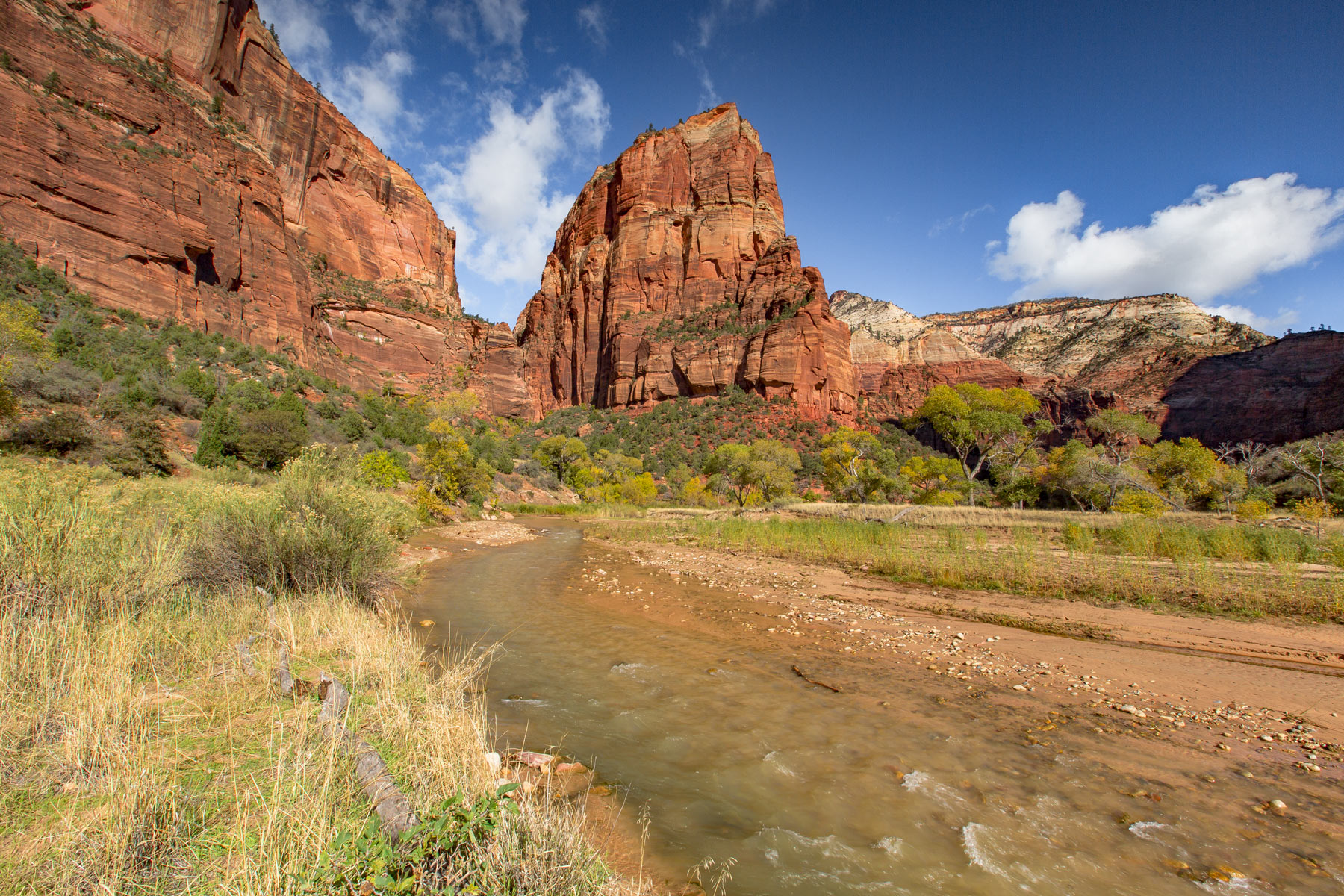
RELATED: 16 EPIC Hikes In Zion National Park
Watch Our Zion National Park Film
ZION is the culmination of nearly a month spent by the Pattiz Brothers exploring Zion National Park during peak fall color. Exquisitely carved by the Virgin River over millions of years, Zion Canyon is one of the most stunning places on earth.
But don’t stop there! This park has so much more to offer outside of the main canyon. Golden meadows, sweeping vistas, red rock mountains, towering white temples, and powerful ancient rivers comprise this incredible treasure. This was filmed primarily in stunning UHD 8K.
The Pattiz Brothers chose to capture this film in Autumn to showcase the stunning and little known fall color of Zion National Park. Fall is also a time when visitation dies down from peak summer months and one can find more solace in the park.
RELATED: 14 BREATHTAKING National Park Videos to Inspire Your Next Trip
Best Things to Do in Zion National Park

There are so many incredible, breathtaking, and life-changing things to do in Zion National Park.
Whether it’s exploring slot canyons like The Narrows or The Subway, hiking to stunning overlooks like Angels Landing, and scenic drives like the Zion Mt. Carmel Highway.
These are a few of our favorite things:
1. Hike the Narrows
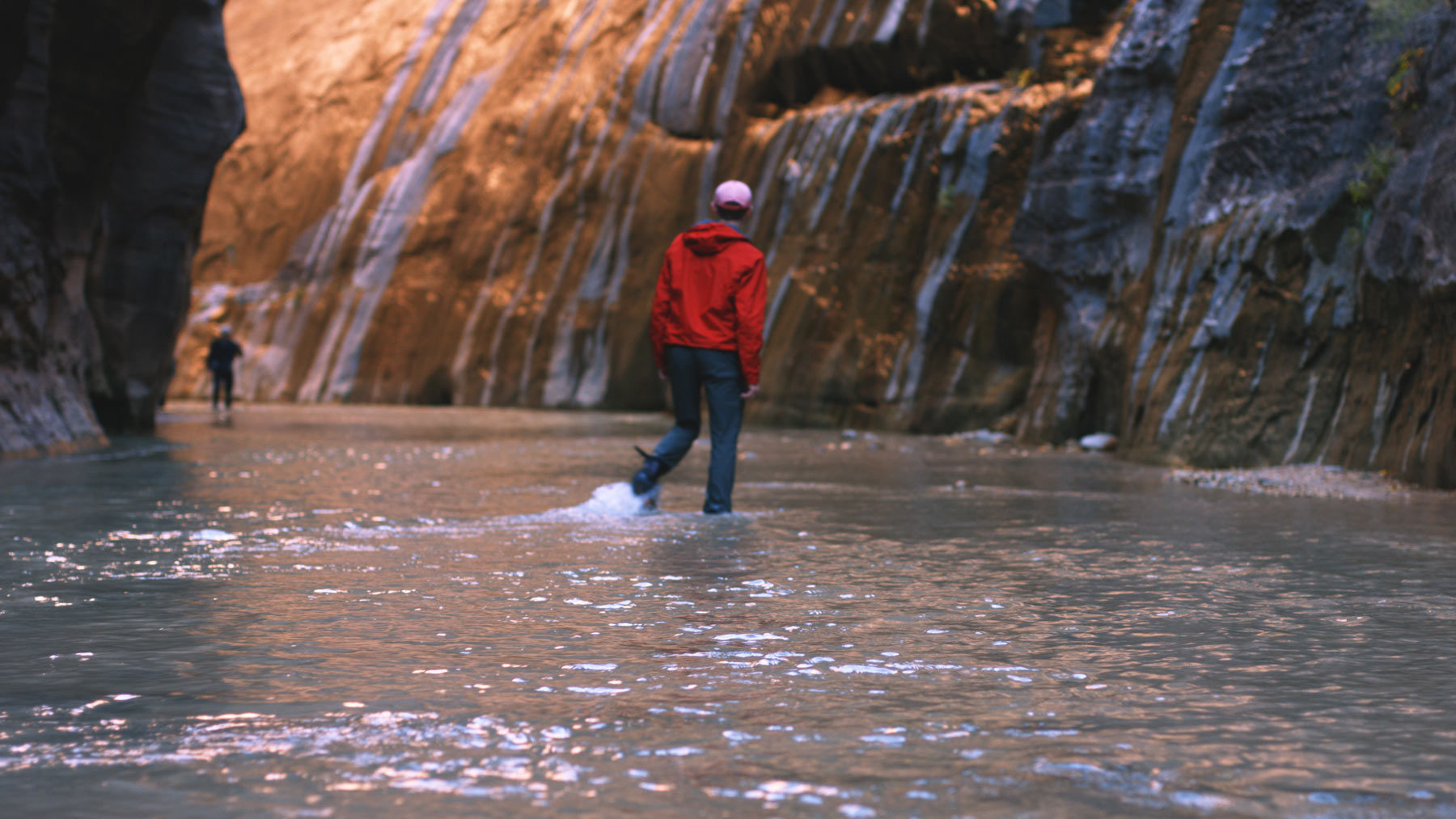
The Narrows is one of the absolute coolest hikes and things to do in Zion National Park and the entire national park system for that matter. Hikers hike, walk, and wade through a narrow canyon of massive red rock canyon walls where the Virgin River has been at work for millions of years.
Distance: 16 miles (but most only hike the first few miles which are incredible)
Time: Typically 2-3 hours depending on how far you go
The total hike is 16 miles long but most folks only do the first few which are incredible. You’ll need some good water shoes for this hike and a hiking pole is recommended although most folks go without (water shoes can be rented in Springdale at a number of places).
The deepest the water gets is about 3-4 feet, but most of the hike is in ankle deep water.
From time to time toxic algae blooms occur in the Virgin River which can be harmful to humans so make sure to check the NPS site before visiting.
2. Ascend Angels Landing

Angel’s Landing is the most popular, well-known hike in Zion National Park leading to one of the most iconic views in all the National Park system. The Angel’s Landing trail is a steep 5 miles with about 1,500ft of elevation gain.
Distance: 5 miles
Elevation Gain: 1500 feet
Time: Typically 3-4 hours
This hike is not for the faint of heart as one section of the trail involves holding onto a chain bolted onto a cliff side with sheer drop offs.
3. Soak it all in at Canyon Overlook

Canyon Overlook is one of the most spectacular and relatively easy to access overlooks in all of Zion National Park. Located on the Zion Mt. Carmel (East) side of the park, the Canyon Overlook Trail is a popular one.
Distance: 1 mile roundtrip
Time: Typically 1-2 hours
The trail itself is about a mile round trip with little elevation gain. Hikers will be rewarded with sweeping views of Zion National Park.
4. Explore Pine Creek Gorge Slot Canyon
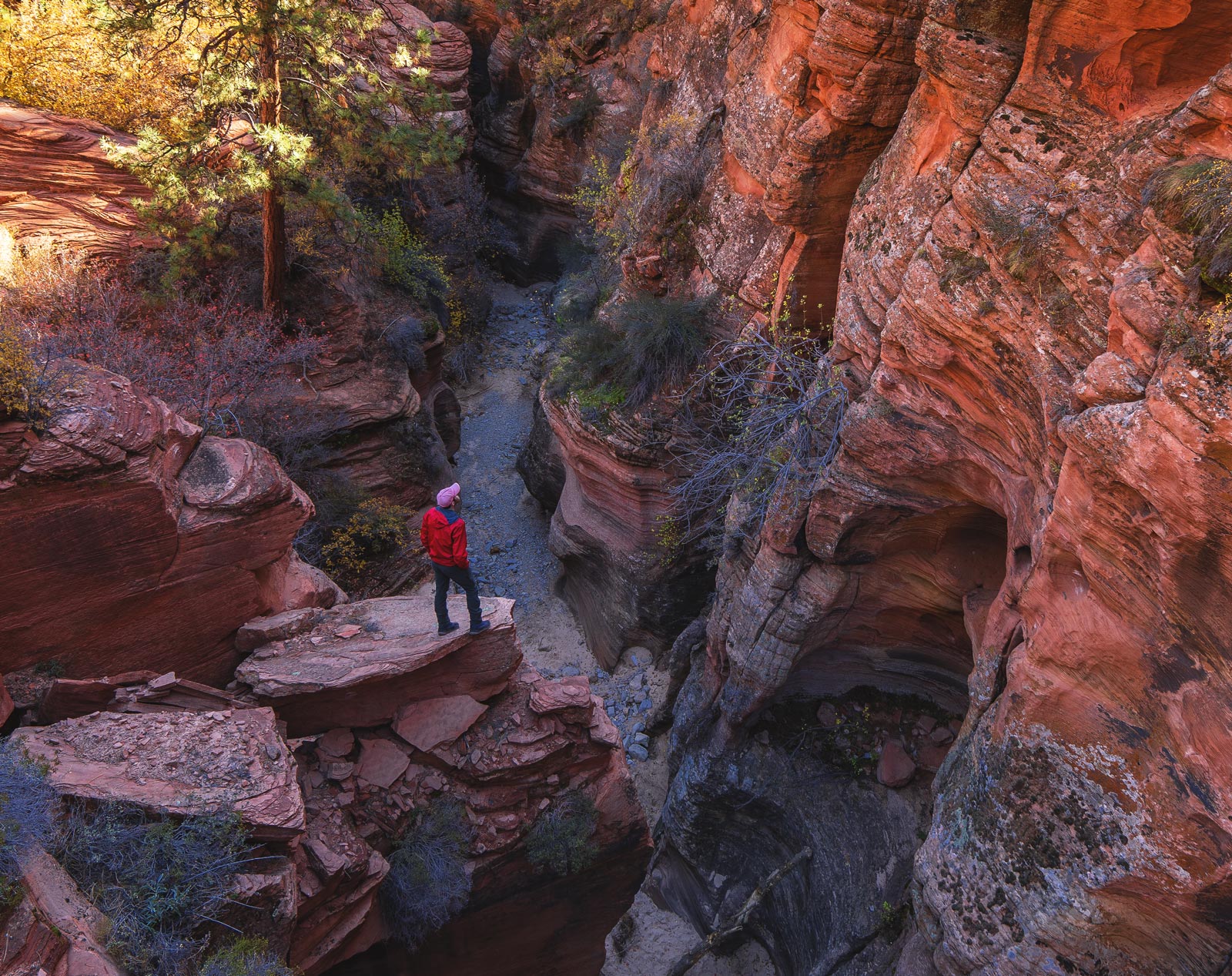
Pine Creek Gorge Slot Canyon is one of the most popular technical canyoneering spots in Zion National Park. If you’re not up for technical rappelling then no problem!
Drive toward the east entrance a bit and find another part of the Pine Creek Gorge to hike around. The creek bed is long and provides lots of great entry points for hikers.
5. Catch a Sunset From Lava Point
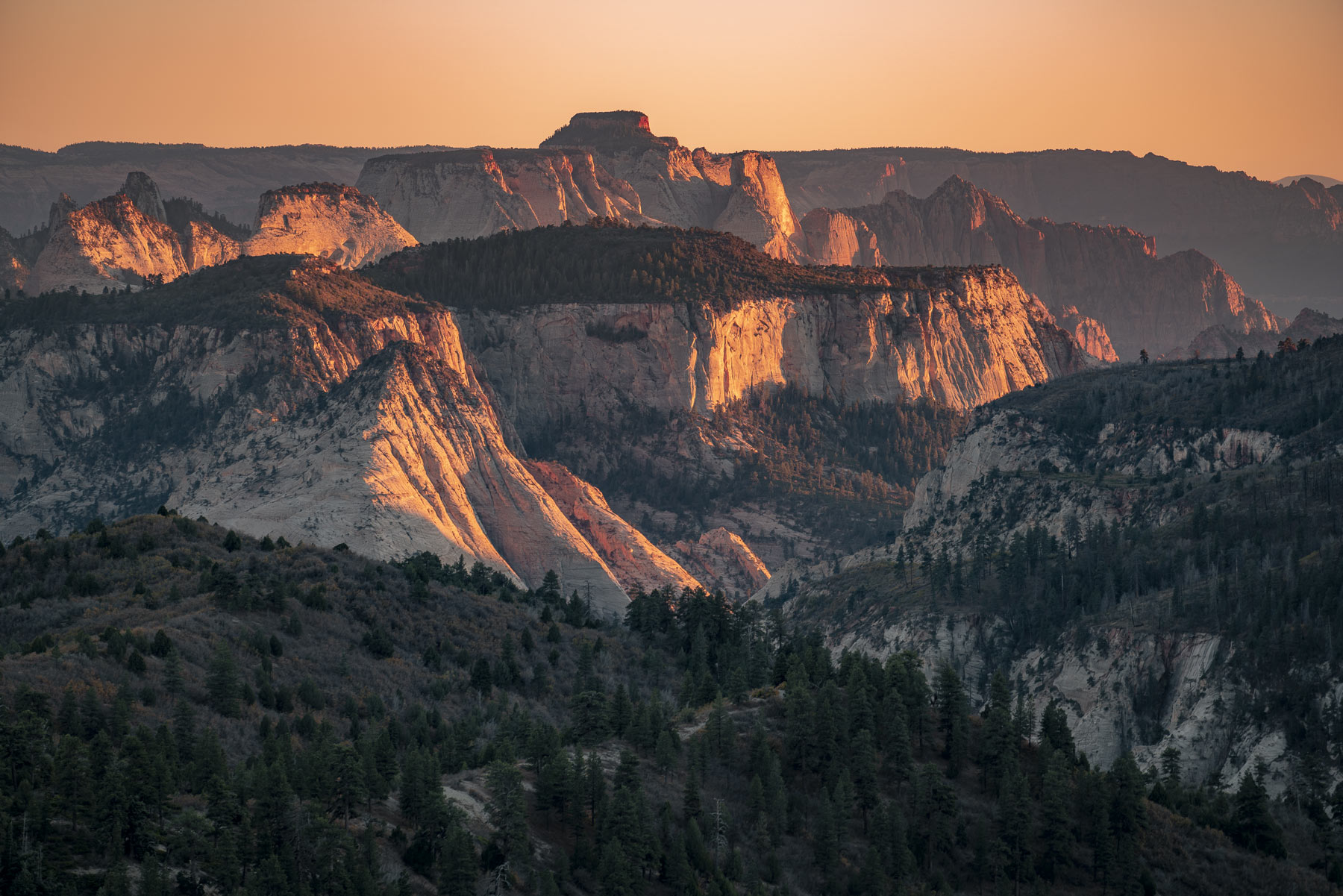
Lava Point is best spot in Zion National Park to watch a sunset. Located in the Kolob Terrace section of the park, this lesser-visited destination is worth a stop.
Escape the crowds here with a very different kind of beauty than the red rock canyons. This overlook does not require any sort of a hike and is situated next to our favorite campground in Zion National Park, Lava Point Campground.
6. Grand Canyon National Park
Grand Canyon located about 130 miles from the heart of Las Vegas. On average, the drive takes approximately two and a half hours.
Sure we could try to describe to you the singular beauty and majesty of one of the great wonders of the world or we could let one of America’s greatest presidents do it.

Yes the South Rim of the Grand Canyon sees crowds in the summer that are reminiscent of a Disney World parking lot, but the Grand Canyon is a large national park.
You might be surprised to learn that there are many areas in the park with the same jaw-dropping views that won’t make you feel like you’re in the busiest terminal of Hartsfield-Jackson Atlanta International Airport on Christmas Eve.
If you’re looking to avoid the crowds head to the less visited North Rim!
Popular Activities At Grand Canyon National Park
Here are some popular activities to do at Grand Canyon National Park:
- Hiking: Explore the park’s many trails, including the popular Rim Trail and Bright Angel Trail.
- Scenic drives: Take a drive along the scenic Hermit Road or Desert View Drive for stunning views of the canyon.
- Rafting & Kayaking: Explore the Colorado River by raft or kayak for a unique perspective of the canyon.
- Mule Rides: Take a guided mule ride along the rim of the canyon or to the bottom of the canyon.
- Wildlife watching: Keep an eye out for local wildlife such as deer, bighorn sheep, and a variety of bird species.
- Camping: There are several campgrounds within the park for overnight stays, including backcountry camping for experienced hikers.
- Photography: The Grand Canyon offers stunning views and opportunities for capturing the unique landscape.
- Ranger Programs: Join a park ranger for a guided hike or talk to learn more about the park’s history, geology, and wildlife.
- Stargazing: The park is known for its clear, dark skies, making it ideal for stargazing and astronomy.
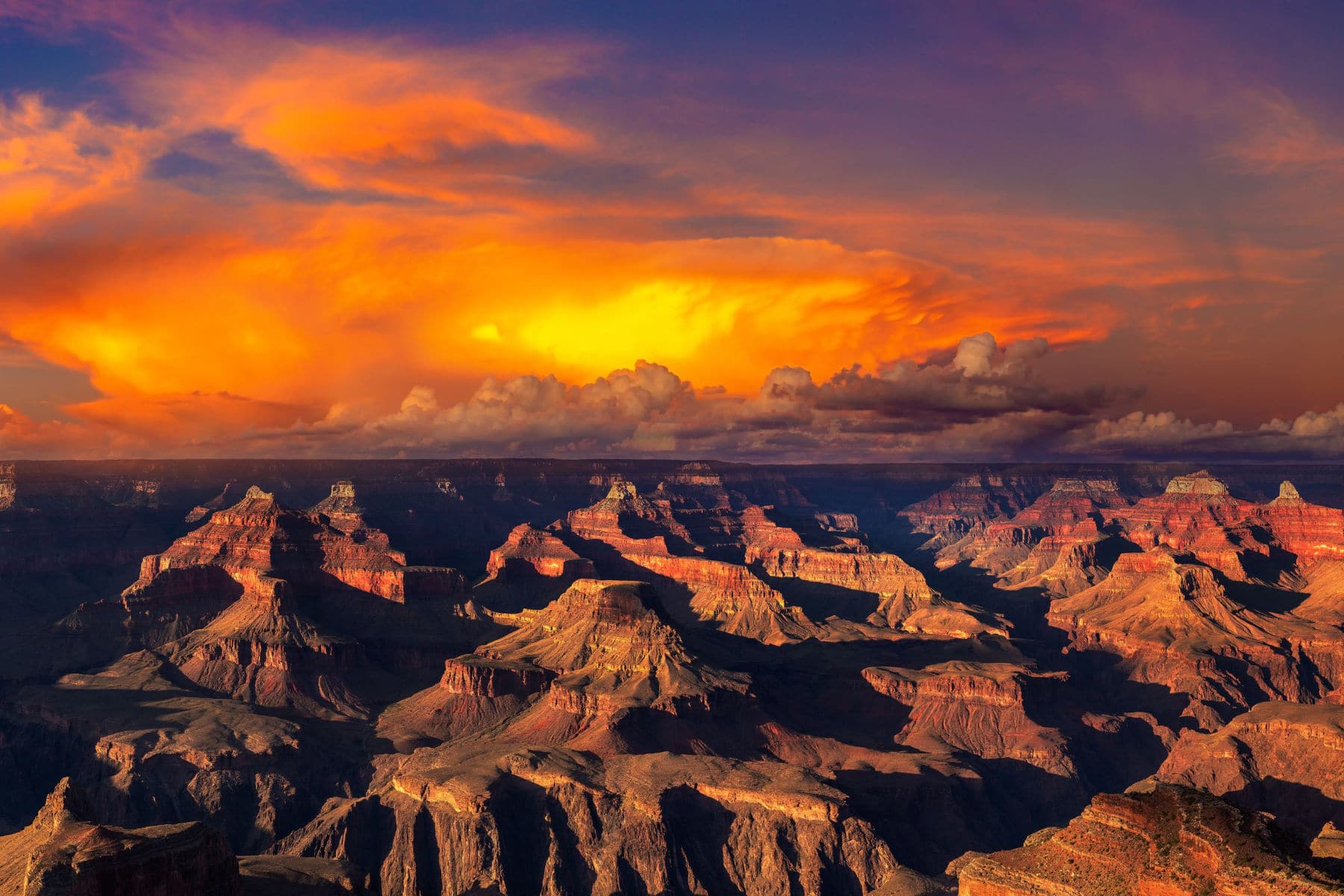
CHECK OUT: 16+ FASCINATING Grand Canyon Facts
Still More National Parks Near Las Vegas
7. Bryce Canyon National Park
A drive from Las Vegas to Bryce Canyon National Park is about 265 miles and will take about four hours. Most of the drive is on the big I-15 interstate.
Bryce Canyon National Park is known for its distinctive geological formations called “hoodoos”, which are tall, thin rock spires that were created by weathering and erosion.
The park offers scenic views, hiking trails, and outdoor recreational opportunities for visitors, including camping, wildlife viewing, and stargazing.
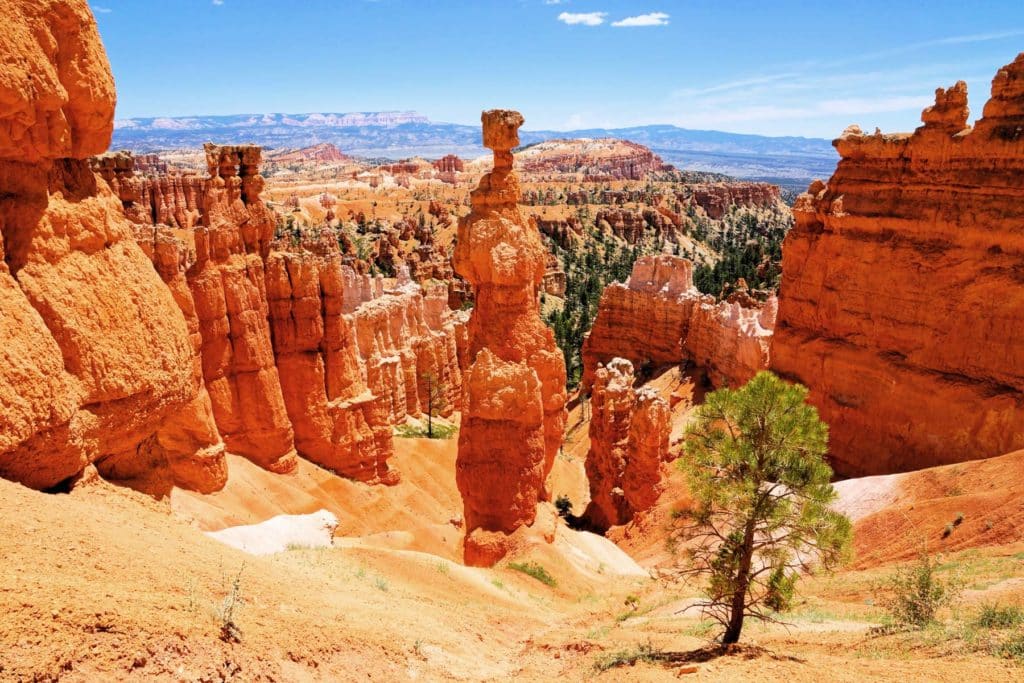
Things To Do At Bryce Canyon
Here are some popular activities to do at Bryce Canyon National Park:
- Hiking: explore the various trails that offer unique perspectives of the hoodoos and scenic vistas.
- Scenic drives: take a drive along the park’s main road, offering several lookout points with panoramic views of the hoodoos.
- Photography: Bryce Canyon is a photographer’s paradise, with stunning views and opportunities for capturing the unique landscape.
- Camping: There are several campgrounds within the park for overnight stays.
- Wildlife watching: Keep an eye out for local wildlife, including mule deer, elk, and a variety of bird species.
- Stargazing: Bryce Canyon is an International Dark Sky Park, with clear, dark skies making it ideal for stargazing and astronomy.
- Ranger Programs: Join a park ranger for a guided hike or talk to learn more about the park’s history, geology, and wildlife.
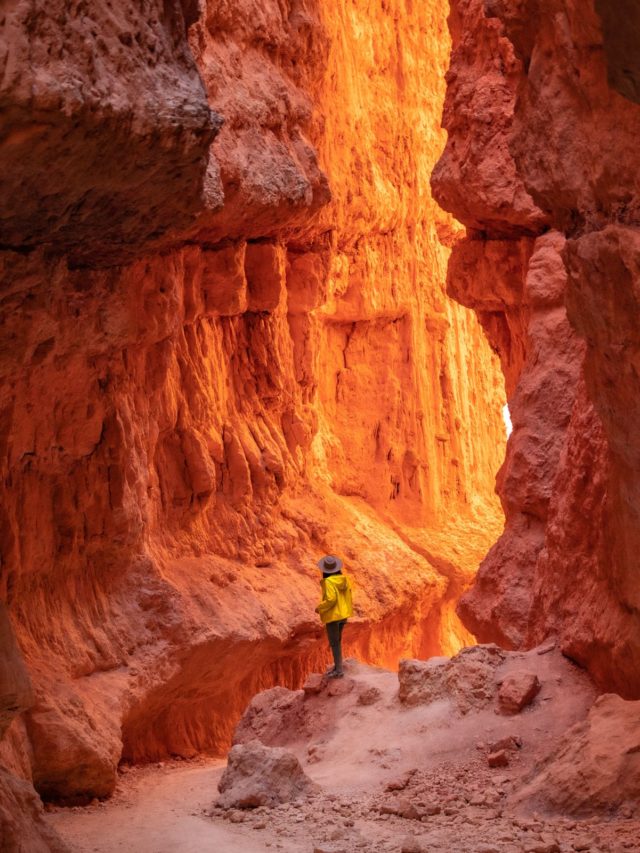
CHECK OUT: 15 SURPRISING Facts About Bryce Canyon National Park
8. Great Basin National Park
Great Basin National Park, in east central Nevada near the Utah border, is about 295 miles from Las Vegas. It’s about a four hour and 30 minute drive.
Great Basin National Park features a unique desert landscape with high-elevation forests, caves, and glaciers. The park is known for its ancient Bristlecone Pine trees, some of which are over 4,000 years old, and for being home to the only glacier in Nevada.
Visitors can enjoy activities such as hiking, camping, horseback riding, and stargazing.
The park also offers several caves for exploration, including the popular Lehman Caves, which have intricate stalactite and stalagmite formations.

FOR A COMPLETE LIST OF THINGS TO DO AT THIS AMAZING PARK CHECK OUT: 20 EPIC THINGS TO DO AT GREAT BASIN NATIONAL PARK
9. Capitol Reef National Park
It’s five hours from Las Vegas to Capitol Reef National Park on the I-15 N.
Probably the least known Utah national park, and yet it’s easily one of the best.
No crowds, abundant scenery, and there’s even a small town (Torrey) nestled up against the park that has restaurants and conveniences that will surprise you.
Lots of great day-hikes and truly out of this world stargazing opportunities (pun intended).
Overlooks that look out on vast and lonely landscapes shaped by geological activity over millennia, uncrowded trails through ancient petroglyphs, natural arches, and beautiful red rock scenery, and historic structures preserving early pioneer life.
What’s not to like about this often-overlooked Utah gem?
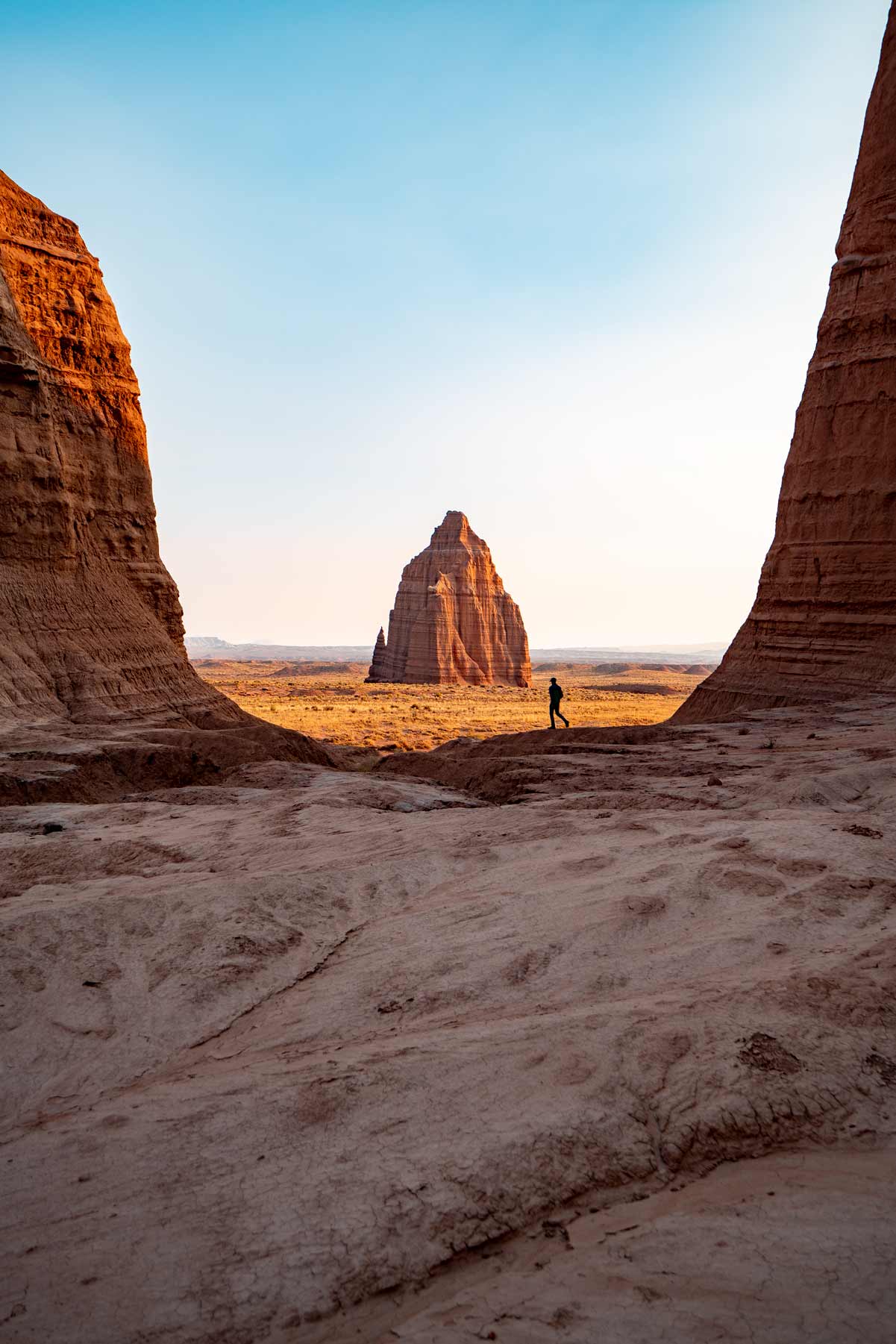
Popular Activities At Capitol Reef
Here are some popular activities to do at Capitol Reef National Park:
- Hiking: Explore the park’s scenic trails, including the popular hike to the top of Capitol Dome.
- Scenic drives: Take a drive along the Scenic Drive, offering panoramic views of the park’s unique landscape.
- Wildlife watching: Keep an eye out for local wildlife such as mule deer, pronghorns, and a variety of bird species.
- Camping: There are several campgrounds within the park for overnight stays.
- Photography: Capitol Reef offers stunning views and unique landscapes, making it a great destination for photographers.
- Rock Climbing: The park has several popular rock climbing and bouldering locations, including the Waterpocket Fold.
- Ranger Programs: Join a park ranger for a guided hike or talk to learn more about the park’s history, geology, and wildlife.
- Fruita Historic District: Explore the historic Fruita district, including orchards, buildings, and a one-room schoolhouse from the early 1900s.
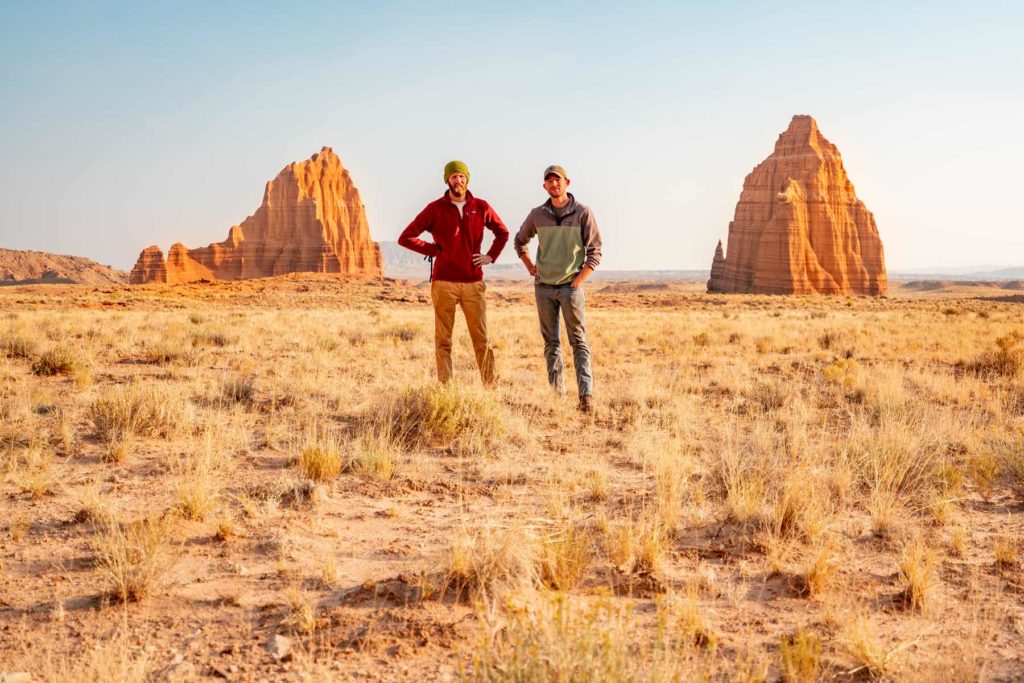
CHECK OUT: 12 AMAZING Facts About Capitol Reef National Park
National Parks Near Las Vegas FAQ
There are nine amazing national park sites that are within a five hour drive of Las Vegas.
The driving distance between Las Vegas to Redwood National and State Parks is 879 miles. It takes approximately 15-hours to drive from Las Vegas to Redwood National and State Parks.
It’s one of the number one tourist destinations worldwide, and it’s an experience that will create lifelong memories for you and your family. If you’re planning to stay in Las Vegas, taking a day trip to the canyon is well worth it and can get you out of the city to indulge in a truly unique outdoor experience.
Why Trust Us About National Parks Near Las Vegas?
We’re Jim Pattiz and Will Pattiz, collectively known as the Pattiz Brothers (and sometimes the Parks Brothers) and we absolutely LOVE the national parks.
You should probably know that we don’t just make this stuff up out of thin air. We’ve spent our entire adult lives exploring and filming America’s national parks and public lands.
We’ve worked with the National Park Service, the Department of Interior, USDA, and the U.S. Forest Service for years creating films on important places and issues. Our work has been featured in leading publications all over the world and even some people outside of our immediate family call us experts on the national parks.
Meet The Parks Brothers
Map Of National Park Sites Near Las Vegas
List Of National Park Sites Near Las Vegas
- Death Valley National Park
- Joshua Tree National Park
- Lake Mead National Recreation Area
- Tule Springs Fossil Beds National Monument
- Zion National Park
- Grand Canyon National Park
- Bryce Canyon National Park
- Great Basin National Park
- Capitol Reef National Park
We Hope You’ll Follow Our Journey
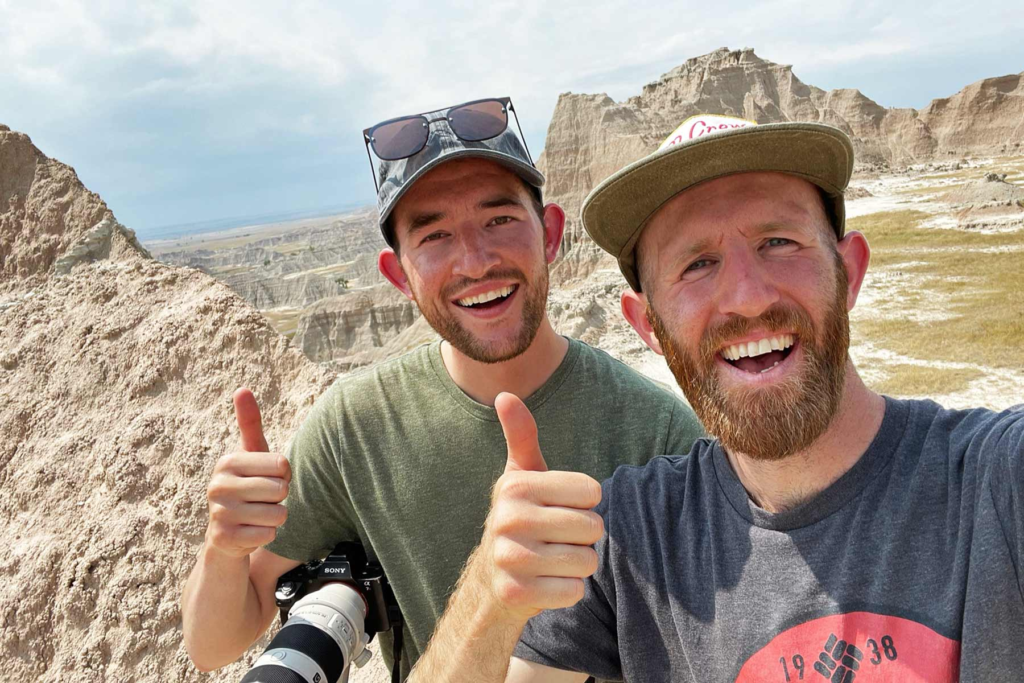
Our goal here at More Than Just Parks is to share the beauty of America’s national parks and public lands through stunning short films in an effort to get Americans and the world to see the true value in land conservation.
We hope you’ll follow our journey through the parks and help us to keep them the incredible places that they are. If you’re interested in joining the adventure then sign up below!
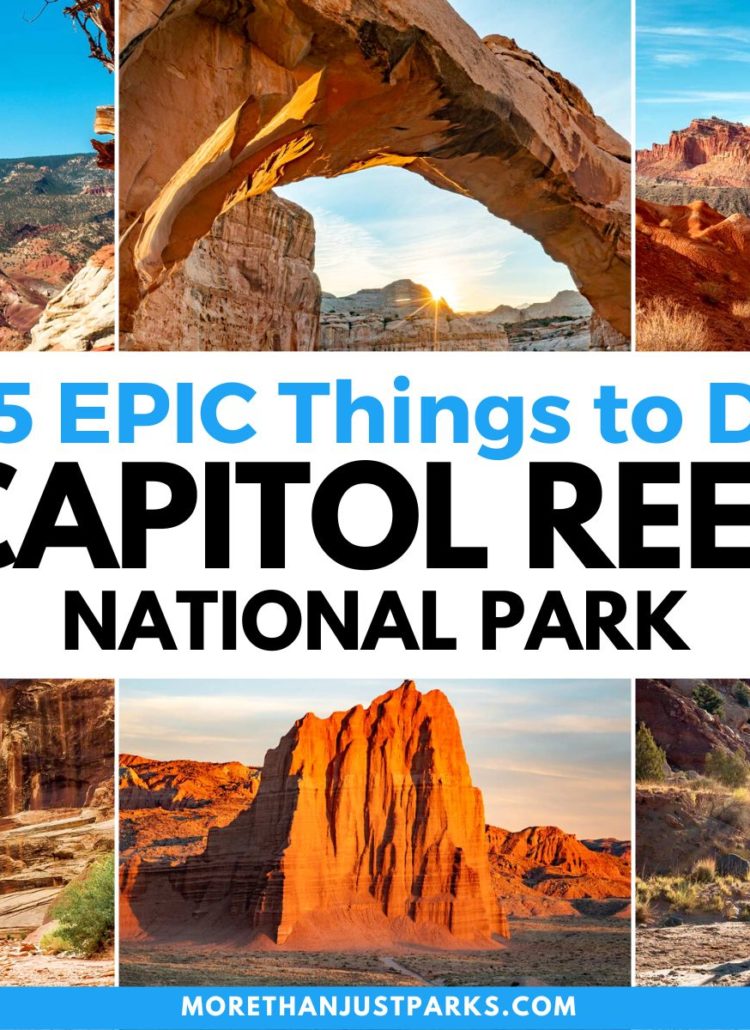
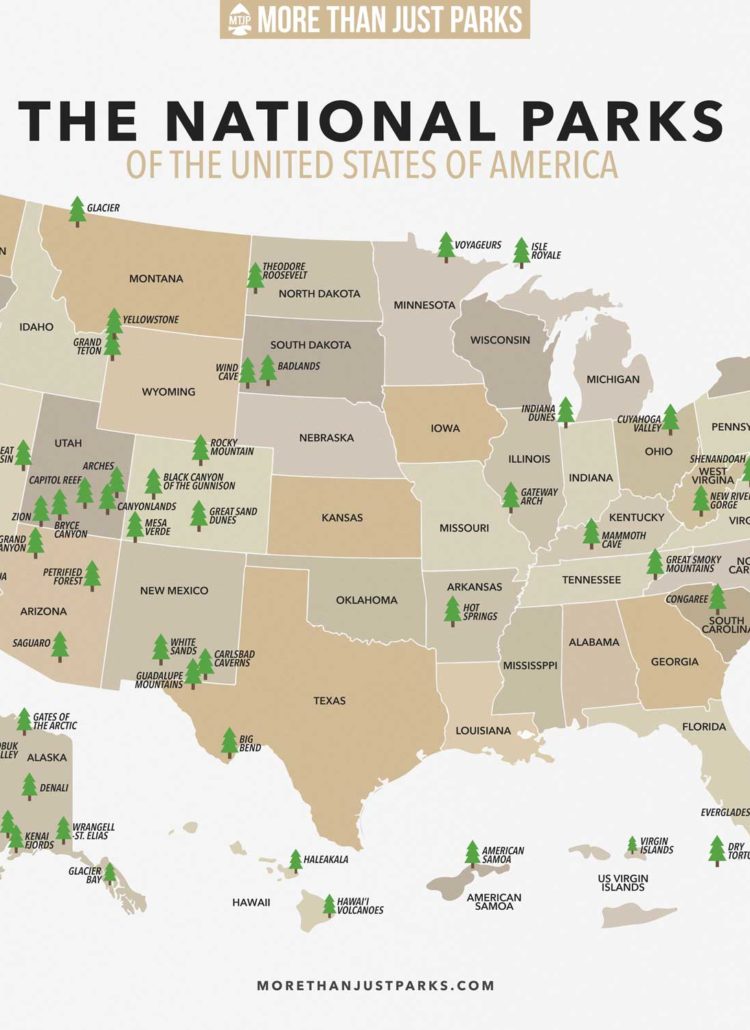

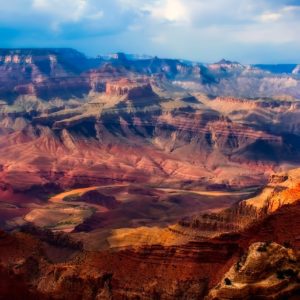

Leave a Reply